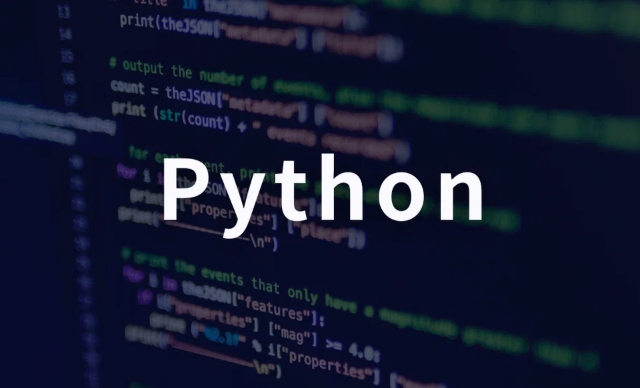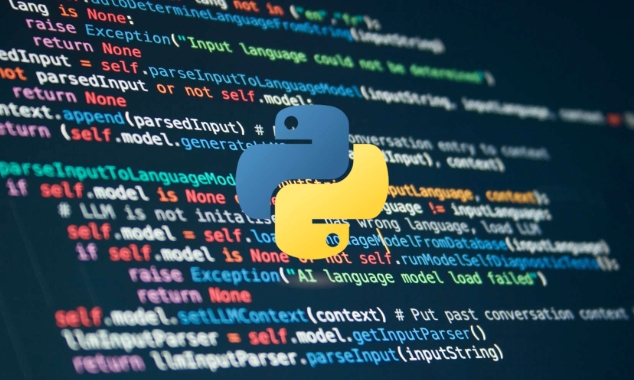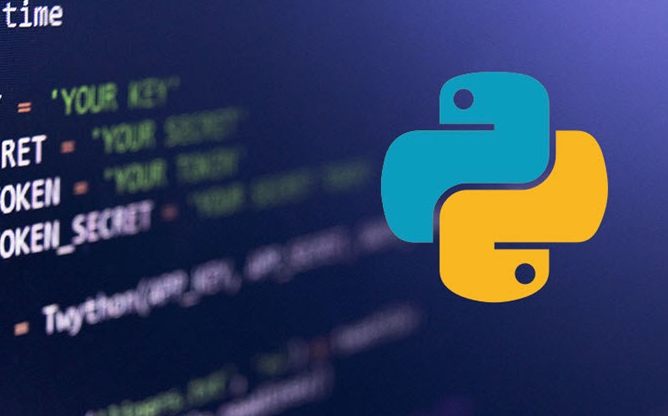Python's class is a template for creating objects that encapsulate data and operations together. For example, defining a Person class can contain attributes such as name and age, and methods such as say_hello, which is implemented by class Person: def __init__(self, name, age): self.name = name; self.age = age; def says_hello(self): print(f "Hello, I am {self.name}, this year {self.age} is {self.age} years old."). Using class to organize code can make the program clearer through encapsulation. For example, the Student class can include adding grades and calculating average scores and other methods. Common problems encountered by beginners include forgetting to write self parameters, obfuscating classes and instances, and not understanding the role of __init__. self is the first parameter of the class method represents the current object itself, and __init__ is automatically called by the constructor when creating the object. Not all cases require classes, and classes come in handy when dealing with multiple associated data structures and wanting them to have their own state and behavior. The key to mastering classes is to write more examples and experience object-oriented thinking.

When learning Python, class is an unavoidable concept. Many people will think it is abstract and difficult to understand at the beginning, but in fact, it is not difficult to understand as long as you use the right examples.

What are Python classes?
Simply put, a class is a kind of "template" used to create objects. For example, you can define a Person class to represent the basic properties and behavior of a person. This class can have attributes such as name and age, or it can also have methods such as saying hello and walking.
Let's give the simplest example:

class Person:
def __init__(self, name, age):
self.name = name
self.age = age
def says_hello(self):
print(f"Hello, I am {self.name}, this year {self.age} is {self.age}.")This way you define a class. Then you can use it to create specific objects:
p1 = Person("Xiao Ming", 25)
p1.say_hello()The output is:

Hello, I am Xiao Ming, I am 25 years old this year.
How to organize code with classes to be clearer?
An important role of a class is to encapsulate data and operations together. For example, if you want to write a program for a student management system, if you don’t use classes, you may write a bunch of functions and variables, and the logic is easy to be confused. If you use classes, you can put the students' attributes and functions in the same place.
For example, you can add some methods:
- Modify age
- Add grades
- Calculate the average score
In this way, each student object has its own data and knows what he can do.
class Student:
def __init__(self, name, age):
self.name = name
self.age = age
self.grades = []
def add_grade(self, grade):
self.grades.append(grade)
def average_grade(self):
if not self.grades:
return 0
return sum(self.grades) / len(self.grades)It's also very convenient to use:
s1 = Student("Zhang San", 20)
s1.add_grade(85)
s1.add_grade(90)
print(s1.average_grade()) # Output 87.5What are the common problems that beginners encounter?
When I first started using classes, there were several common pitfalls:
- Forgot to write
selfparameter, resulting in an error - Confused classes and instances
- Don't quite understand what
__init__does
Let me briefly talk about it here:
-
selfis the first parameter of the class method, representing the current object itself -
__init__is a constructor, which is automatically called when creating an object. - Class is a template, instance is the specific data
If you see an error like TypeError: method() missing 1 required positional argument: 'self' , it is most likely that you missed self .
When should I use classes?
Not all cases require classes. If you just do some simple calculations or processing, it is enough to use functions. But classes come in handy when you start working on multiple associated data structures and want them to have their own state and behavior.
for example:
- Manage user information
- Operate graphical interface components
- Build a character system in the game
At this time, using classes can make the code more organized and easier to maintain.
In general, although Python classes are a bit of a threshold at the beginning, mastering them will allow you to write clearer and more structured code. The key is to write more examples and slowly understand the object-oriented thinking style. Basically that's it.
The above is the detailed content of Python class example. For more information, please follow other related articles on the PHP Chinese website!

Hot AI Tools

Undress AI Tool
Undress images for free

Undresser.AI Undress
AI-powered app for creating realistic nude photos

AI Clothes Remover
Online AI tool for removing clothes from photos.

Clothoff.io
AI clothes remover

Video Face Swap
Swap faces in any video effortlessly with our completely free AI face swap tool!

Hot Article

Hot Tools

Notepad++7.3.1
Easy-to-use and free code editor

SublimeText3 Chinese version
Chinese version, very easy to use

Zend Studio 13.0.1
Powerful PHP integrated development environment

Dreamweaver CS6
Visual web development tools

SublimeText3 Mac version
God-level code editing software (SublimeText3)
 Polymorphism in python classes
Jul 05, 2025 am 02:58 AM
Polymorphism in python classes
Jul 05, 2025 am 02:58 AM
Polymorphism is a core concept in Python object-oriented programming, referring to "one interface, multiple implementations", allowing for unified processing of different types of objects. 1. Polymorphism is implemented through method rewriting. Subclasses can redefine parent class methods. For example, the spoke() method of Animal class has different implementations in Dog and Cat subclasses. 2. The practical uses of polymorphism include simplifying the code structure and enhancing scalability, such as calling the draw() method uniformly in the graphical drawing program, or handling the common behavior of different characters in game development. 3. Python implementation polymorphism needs to satisfy: the parent class defines a method, and the child class overrides the method, but does not require inheritance of the same parent class. As long as the object implements the same method, this is called the "duck type". 4. Things to note include the maintenance
 Explain Python generators and iterators.
Jul 05, 2025 am 02:55 AM
Explain Python generators and iterators.
Jul 05, 2025 am 02:55 AM
Iterators are objects that implement __iter__() and __next__() methods. The generator is a simplified version of iterators, which automatically implement these methods through the yield keyword. 1. The iterator returns an element every time he calls next() and throws a StopIteration exception when there are no more elements. 2. The generator uses function definition to generate data on demand, saving memory and supporting infinite sequences. 3. Use iterators when processing existing sets, use a generator when dynamically generating big data or lazy evaluation, such as loading line by line when reading large files. Note: Iterable objects such as lists are not iterators. They need to be recreated after the iterator reaches its end, and the generator can only traverse it once.
 How to handle API authentication in Python
Jul 13, 2025 am 02:22 AM
How to handle API authentication in Python
Jul 13, 2025 am 02:22 AM
The key to dealing with API authentication is to understand and use the authentication method correctly. 1. APIKey is the simplest authentication method, usually placed in the request header or URL parameters; 2. BasicAuth uses username and password for Base64 encoding transmission, which is suitable for internal systems; 3. OAuth2 needs to obtain the token first through client_id and client_secret, and then bring the BearerToken in the request header; 4. In order to deal with the token expiration, the token management class can be encapsulated and automatically refreshed the token; in short, selecting the appropriate method according to the document and safely storing the key information is the key.
 How to iterate over two lists at once Python
Jul 09, 2025 am 01:13 AM
How to iterate over two lists at once Python
Jul 09, 2025 am 01:13 AM
A common method to traverse two lists simultaneously in Python is to use the zip() function, which will pair multiple lists in order and be the shortest; if the list length is inconsistent, you can use itertools.zip_longest() to be the longest and fill in the missing values; combined with enumerate(), you can get the index at the same time. 1.zip() is concise and practical, suitable for paired data iteration; 2.zip_longest() can fill in the default value when dealing with inconsistent lengths; 3.enumerate(zip()) can obtain indexes during traversal, meeting the needs of a variety of complex scenarios.
 What are python iterators?
Jul 08, 2025 am 02:56 AM
What are python iterators?
Jul 08, 2025 am 02:56 AM
InPython,iteratorsareobjectsthatallowloopingthroughcollectionsbyimplementing__iter__()and__next__().1)Iteratorsworkviatheiteratorprotocol,using__iter__()toreturntheiteratorand__next__()toretrievethenextitemuntilStopIterationisraised.2)Aniterable(like
 Explain Python assertions.
Jul 07, 2025 am 12:14 AM
Explain Python assertions.
Jul 07, 2025 am 12:14 AM
Assert is an assertion tool used in Python for debugging, and throws an AssertionError when the condition is not met. Its syntax is assert condition plus optional error information, which is suitable for internal logic verification such as parameter checking, status confirmation, etc., but cannot be used for security or user input checking, and should be used in conjunction with clear prompt information. It is only available for auxiliary debugging in the development stage rather than substituting exception handling.
 What are Python type hints?
Jul 07, 2025 am 02:55 AM
What are Python type hints?
Jul 07, 2025 am 02:55 AM
TypehintsinPythonsolvetheproblemofambiguityandpotentialbugsindynamicallytypedcodebyallowingdeveloperstospecifyexpectedtypes.Theyenhancereadability,enableearlybugdetection,andimprovetoolingsupport.Typehintsareaddedusingacolon(:)forvariablesandparamete
 Python FastAPI tutorial
Jul 12, 2025 am 02:42 AM
Python FastAPI tutorial
Jul 12, 2025 am 02:42 AM
To create modern and efficient APIs using Python, FastAPI is recommended; it is based on standard Python type prompts and can automatically generate documents, with excellent performance. After installing FastAPI and ASGI server uvicorn, you can write interface code. By defining routes, writing processing functions, and returning data, APIs can be quickly built. FastAPI supports a variety of HTTP methods and provides automatically generated SwaggerUI and ReDoc documentation systems. URL parameters can be captured through path definition, while query parameters can be implemented by setting default values ??for function parameters. The rational use of Pydantic models can help improve development efficiency and accuracy.






